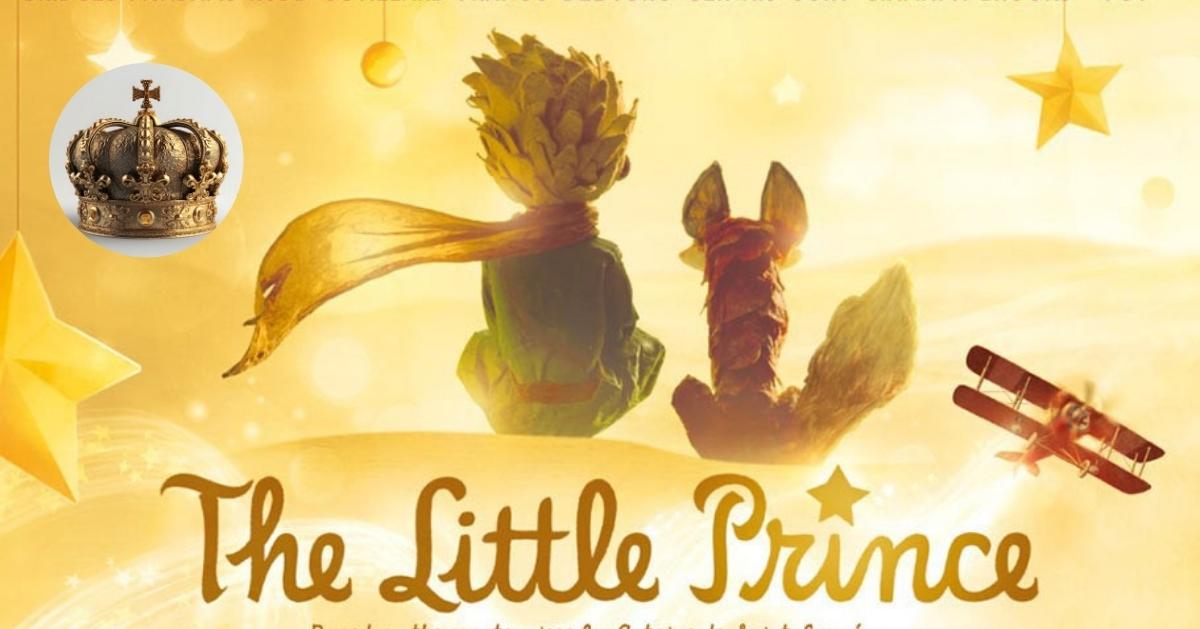The Little Prince Full Book Summary

“The Little Prince” begins with a pilot stranded in the Sahara Desert, where he encounters a young boy, the Little Prince, who asks him to draw a sheep. As the pilot sketches, the Prince recounts his life story. He hails from Asteroid B-612, where he cares for a beloved but demanding Rose. Seeking understanding, he travels through the universe, encountering various asteroids and their peculiar inhabitants.
On his journey, he meets a King who rules over nothing, a Vain Man seeking admiration, a drunkard who drinks to forget his shame and others. Each encounter reveals the absurdity of adult behavior and their preoccupations. The Prince befriends a wise Fox, learning the importance of cultivating connections and seeing with the heart.
His most profound relationship is with a Rose on Earth, representing love and longing. Misunderstandings lead the Prince to explore other planets, gaining wisdom from characters like a Lamplighter trapped in repetitive tasks and a Geographer who knows theories but lacks exploration.
Ultimately, the Prince encounters a Snake, who offers to help him return home. In an act of sacrifice, the Prince allows the Snake to bite him, departing Earth and reuniting with his Rose.
The pilot, moved by the Prince’s story, fixes his plane and gazes at the stars, forever changed by the Little Prince’s teachings on love, friendship, imagination, and the essential truths of life.
[You can Also Read: The Glass Castle: A Detailed Summary of the Story]
Character List
“The Little Prince” navigates a universe rich with allegorical characters, each a facet of human behavior and societal constructs. The titular character, a curious and wise young boy, embarks on a journey that intertwines with individuals like the Rose, symbolizing love and beauty, guiding his exploration of life’s complexities.
The Pilot, stranded in the Sahara, becomes the storyteller and the lens through which readers experience the Little Prince’s odyssey. Along this path, encounters with the Fox impart profound wisdom on relationships and seeing beyond appearances, while characters like the King, the Vain Man, the Lamplighter, the Geographer, and the Businessman embody societal facets, shedding light on power, vanity, routine, theoretical knowledge versus practical experience, and possessiveness.
Crucial to the story’s conclusion is the enigmatic Snake, a mysterious figure leading to the Prince’s departure from Earth. Each character serves as a mirror to human traits, illuminating themes of love, loneliness, the whimsy of adulthood, and the significance of perceiving through the heart rather than the eyes.
Through this tapestry of characters, “The Little Prince” crafts an intricate narrative that invites readers of all ages to contemplate the human condition, societal norms, and the essence of relationships, urging us to reconsider what truly matters in life’s journey.
Themes:
“The Little Prince” intricately weaves thematic threads that resonate deeply with readers. Loneliness, countered by the pursuit of meaningful connections, forms the core of the Prince’s journey. His friendships with the pilot, the fox, and others underscore the profound significance of human bonds.
Saint-Exupéry’s narrative deftly critiques adult behaviors, satirizing their irrationality through encounters with characters like the King, the Vain Man, and the Businessman. This serves as a poignant commentary on the lack of imagination and the obsession with trivial matters in grown-ups.
Celebrating childhood’s imaginative spirit, the tale champions the Little Prince’s ability to discern the unseen essence of the Rose and the Fox, championing creativity amidst societal conformity.
Central to the narrative is the theme of seeing with the heart, imparted by the fox. This resonant lesson emphasizes emotional intelligence and understanding beyond surface appearances.
The Prince’s Odyssey becomes a journey of self-discovery, both physical and metaphysical, inviting readers to reflect on their paths and the complexities of growth.
The Prince’s bond with the Rose reveals human emotions, misunderstandings, and sacrifices in caring for others.
The businessman embodies materialism, prompting reflection on chasing possessions over life’s meaningful elements.
Encounters with the Lamplighter and the Snake prompt deep contemplation on life’s cyclical nature and mortality.
“The Little Prince” weaves themes, urging readers to embrace childhood wonder and contemplate life’s profound connections.
[You can Also Read: The Book Thief Full Book Summary]
Study Guide
“The Little Prince” study guide explores Antoine de Saint-Exupéry’s timeless novella. The Little Prince, a whimsical traveler, symbolizes innocence, enlightenment, and the pilot’s transformative encounter in the Sahara. Analyze profound themes such as loneliness, the absurdity of adulthood, and the importance of seeing with the heart. The Rose embodies love’s complexities; the Fox imparts lessons on connection while symbolizing imagination and self-discovery. Engage in discussions, activities, and creative projects, and consider the novella’s enduring impact on literature and the human experience.
Conclusion
The Little Prince summary concludes with a poignant and bittersweet ending. The Little Prince, embracing sacrifice, lets the snake bite him, departing Earth to reunite with his cherished Rose. The Prince’s ultimate sacrifice embodies love, selflessness, and the pursuit of profound truths beyond the physical realm.
